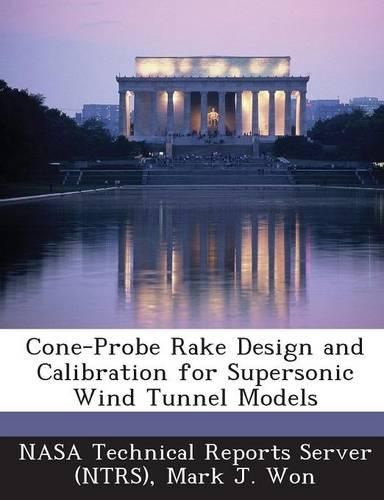Readings Newsletter
Become a Readings Member to make your shopping experience even easier.
Sign in or sign up for free!
You’re not far away from qualifying for FREE standard shipping within Australia
You’ve qualified for FREE standard shipping within Australia
The cart is loading…






A series of experimental investigations were conducted at the NASA Langley Unitary Plan Wind Tunnel (UPWT) to calibrate cone-probe rakes designed to measure the flow field on 1-2% scale, high-speed wind tunnel models from Mach 2.15 to 2.4. The rakes were developed from a previous design that exhibited unfavorable measurement characteristics caused by a high probe spatial density and flow blockage from the rake body. Calibration parameters included Mach number, total pressure recovery, and flow angularity. Reference conditions were determined from a localized UPWT test section flow survey using a 10deg supersonic wedge probe. Test section Mach number and total pressure were determined using a novel iterative technique that accounted for boundary layer effects on the wedge surface. Cone-probe measurements were correlated to the surveyed flow conditions using analytical functions and recursive algorithms that resolved Mach number, pressure recovery, and flow angle to within +/-0.01, +/-1% and +/-0.1deg, respectively, for angles of attack and sideslip between +/-8deg. Uncertainty estimates indicated the overall cone-probe calibration accuracy was strongly influenced by the propagation of measurement error into the calculated results.
$9.00 standard shipping within Australia
FREE standard shipping within Australia for orders over $100.00
Express & International shipping calculated at checkout
A series of experimental investigations were conducted at the NASA Langley Unitary Plan Wind Tunnel (UPWT) to calibrate cone-probe rakes designed to measure the flow field on 1-2% scale, high-speed wind tunnel models from Mach 2.15 to 2.4. The rakes were developed from a previous design that exhibited unfavorable measurement characteristics caused by a high probe spatial density and flow blockage from the rake body. Calibration parameters included Mach number, total pressure recovery, and flow angularity. Reference conditions were determined from a localized UPWT test section flow survey using a 10deg supersonic wedge probe. Test section Mach number and total pressure were determined using a novel iterative technique that accounted for boundary layer effects on the wedge surface. Cone-probe measurements were correlated to the surveyed flow conditions using analytical functions and recursive algorithms that resolved Mach number, pressure recovery, and flow angle to within +/-0.01, +/-1% and +/-0.1deg, respectively, for angles of attack and sideslip between +/-8deg. Uncertainty estimates indicated the overall cone-probe calibration accuracy was strongly influenced by the propagation of measurement error into the calculated results.